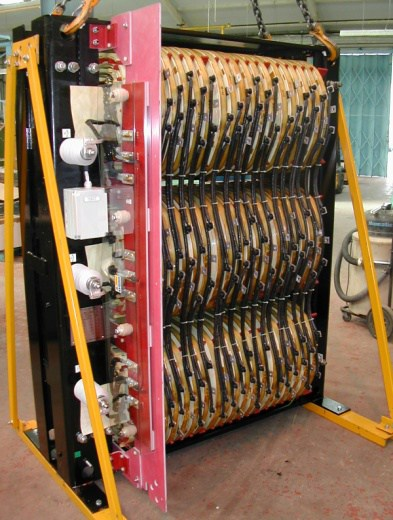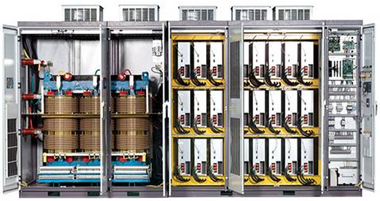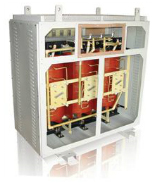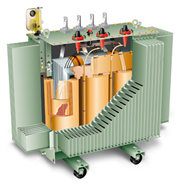Types of transformers
Dry or liquid-filled
Basically, there are two distinct types of transformers: Liquid insulated and cooled (liquid-filled type) and non-liquid insulated, air or air/gas cooled (dry type) - see Fig. 1 and 2. Also, there are subcategories of each main type.
Liquid-filled transformers (also called oil-immersed) are normally more efficient than dry-types, and they usually have a longer life expectancy. Also, liquid is a more efficient cooling medium in reducing hot spot temperatures in the coils. In addition, liquid-filled units have a better overload capability. There are some drawbacks, however. For example, fire prevention is more important with liquid-type units because of the use of a liquid cooling medium that may catch fire. (Dry-type transformers can catch fire, too.) It’s even possible for an improperly protected wet-type transformer to explode. And, depending on the application, liquid-filled transformers may require a containment trough for protection against possible leaks of the fluid.
Arguably, when choosing transformers, the changeover point between dry-types and wet-types is between 500 kVA to about 2.5 MVA, with dry-types used for the lower ratings and wet-types for the higher ratings.
Important factors when choosing what type to use include where the transformer will be installed, such as inside an office building or outside, servicing an industrial load.
Dry-type transformers with ratings exceeding 5 MVA are available, but the vast majority of the higher-capacity transformers are liquid-filled. For outdoor applications, wet-type transformers are the predominate choice.
Windings
Ordinary transformers have two windings; one primary and one secondary. However, there exist three- or four-winding transformers. ABB says2: “The rectifiers used in low voltage VSDs are usually both 6-pulse or 12-pulse rectifiers, and they may be diode bridges, thyristor bridges or power transistor solutions. The 6-pulse rectifier is supplied by a two-winding transformer and the 12-pulse rectifier needs a three-winding transformer, having two separate secondary windings with 30° phase shift.”
Special converters requiring multiple inputs call for multi-winding transformers like the one in Fig.3.
 Fig.3. Transformer for SCHB converters.
Fig.3. Transformer for SCHB converters.
In DriveConstructor there are the following options: «2-winding», «3-winding», «multi-winding».
Cooling type
Where the dissipation of heat is an important factor, the possibility to cool the electrical apparatus with water allows better management with the cooling system.
 Fig.4. Water-cooled transformer.3
Fig.4. Water-cooled transformer.3
Integrated or stand-alone
Transformer can be integrated with the frequency converter or be mechanically separated, the latter variant called "stand-alone". Integrated designs are not common. Integration means usually sharing cooling system (heat exchanger, cooling ducts, water piping).
 Fig.5. Non-integrated transformer.1
Fig.5. Non-integrated transformer.1
More information can be found here.
1 Source of picture
2 Source: ABB, VSD transformers
3 Source of picture
4 Source of picture
5 Source of picture
 Fig.1. Dry.
Fig.1. Dry. Fig.2. Oil.
Fig.2. Oil.